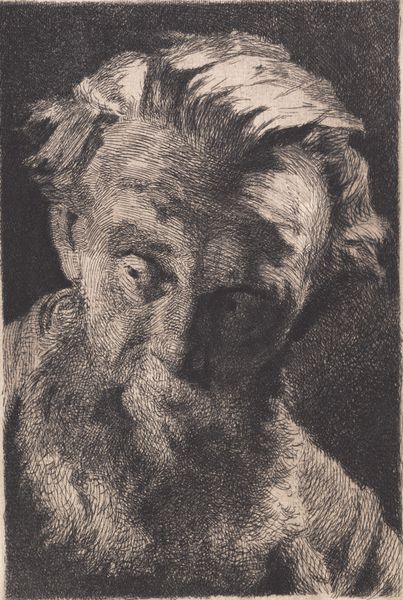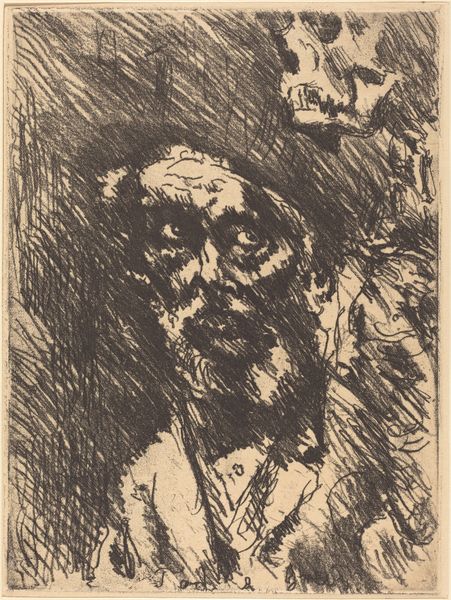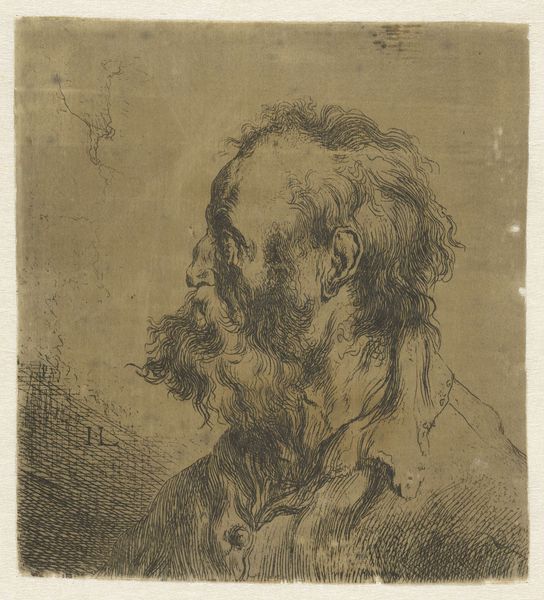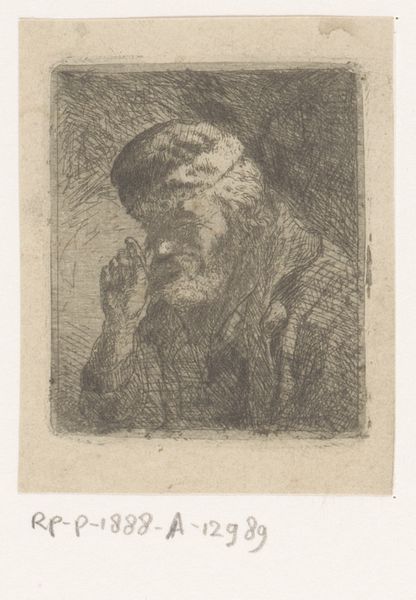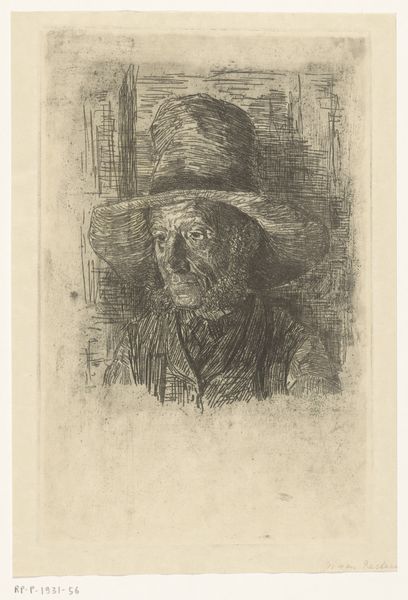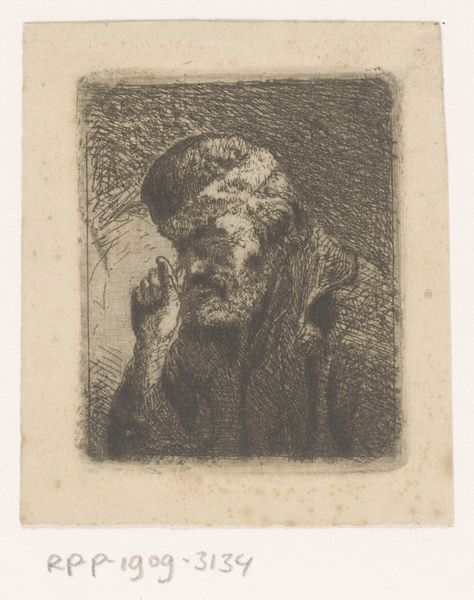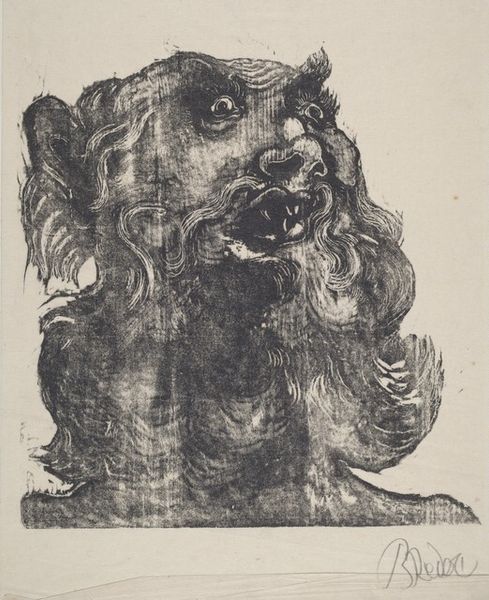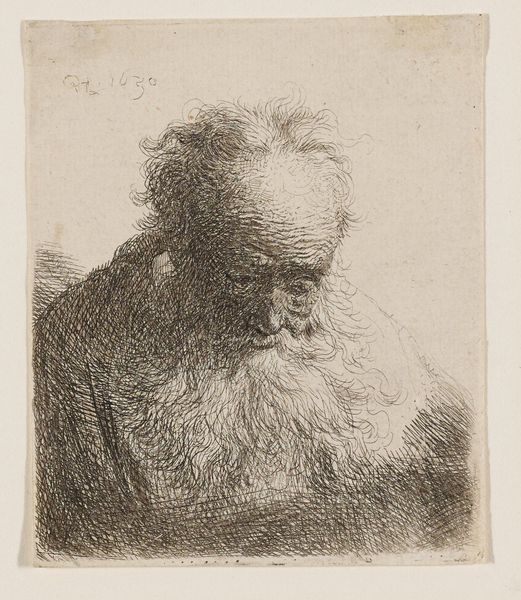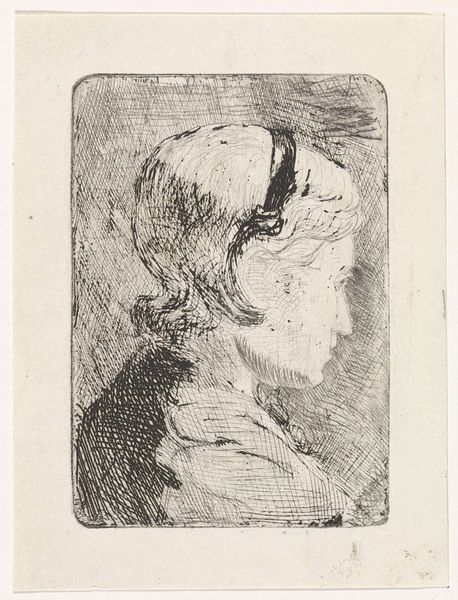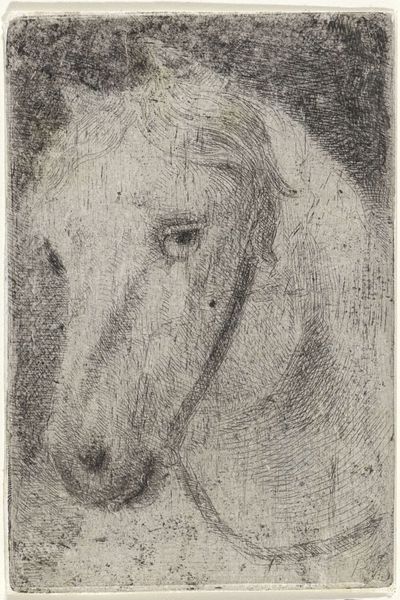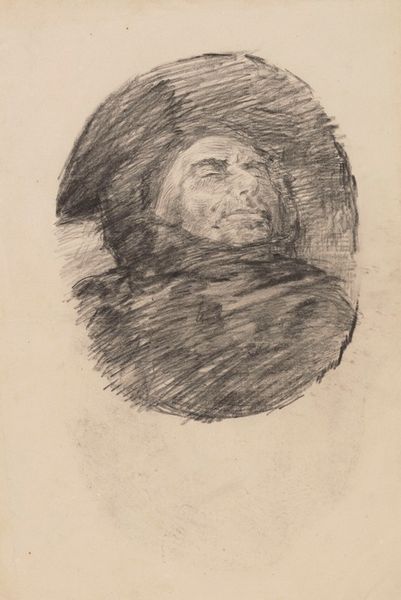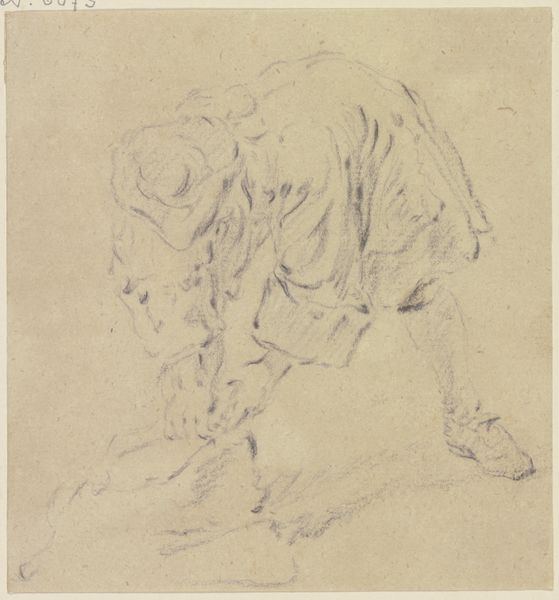
drawing, print, etching
#
portrait
#
drawing
# print
#
etching
#
portrait drawing
#
realism
Dimensions: 158 mm (height) x 100 mm (width) (plademaal)
Curator: Up next is "Gammel mand med hvid ulden hue, en face" created in 1908 by Frans Schwartz. This work, whose title translates to "Old man with white woollen cap, frontal view", is an etching print now residing at the SMK, Statens Museum for Kunst. Editor: The stark contrast immediately grabs you. It’s as if half of the man's face is illuminated by harsh light, the other hidden in deep shadow. Curator: Schwartz was deeply influenced by realism. What resonates for me is its ability to capture the often-difficult circumstances and emotions faced by working-class individuals, specifically focusing on their socioeconomic marginalization in that era. Editor: The woollen cap. To me, it’s a potent symbol. It simultaneously signifies warmth and protection but also, perhaps, a hiding, a desire to shield oneself from the gaze of the world. Wool itself, associated with the pastoral, links him to themes of labor and even vulnerability. Curator: I see your point. Considering the time, that protective stance could represent the societal pressures and challenges the man faced. The piece captures not just a physical likeness, but the historical narrative embedded in his existence, representing labor rights and social inequality in the context of Danish society at the beginning of the 20th century. Editor: Indeed, look closely at the lines etched to create the facial texture. Each stroke carries weight, mapping out wrinkles and lines etched by time and, quite possibly, hardship. Those marks aren’t merely aesthetic details; they narrate a life story of the individual, and a piece of societal history, captured in symbolic form. Curator: Absolutely. The artist has used the portrait format to highlight both personal struggle and a broader cultural anxiety, reflecting the intersectionality of class and age. The eyes, though, seem to invite you closer. Editor: They do, don't they? Despite everything, there’s a palpable strength there, a kind of defiant dignity. It reminds me how symbols, through skillful manipulation, can communicate complex human truths. Curator: By analyzing the representation of the figure, and considering gendered portrayals alongside class depictions, we can gain new insights into the historical context and representational challenges faced by artists like Schwartz. Editor: Ultimately, it comes down to acknowledging the human condition through symbolism. It's fascinating how much cultural and personal weight these lines can carry!
Comments
No comments
Be the first to comment and join the conversation on the ultimate creative platform.
